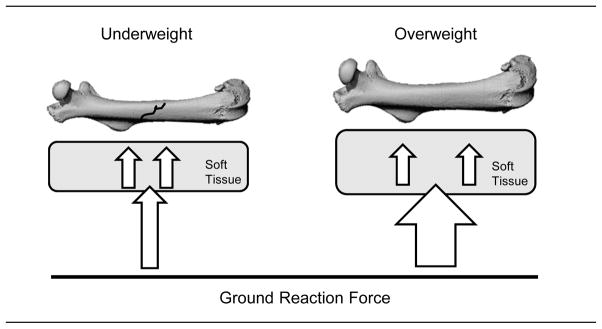Figure 3.
The complex relationship between BMI, BMD and fracture risk is illustrated in the schematic. Compared to an underweight individual, an overweight individual experiencing a fall from the same height would generate a proportionately greater load on a limb (ground reaction force). However, the presence of greater amount of soft tissue in the heavier individual should attenuate more of the load and distribute the remaining load over a larger bone surface, reducing peak strain such that the effective load could be greater in the lighter individual. Assuming equivalent bone quality, the higher BMD typical in the heavier individual would be a further advantage in reducing strain below that required for a fracture. However, based on epidemiological studies, further increases in weight may provide a diminishing return because the reductions in load during a fall related to soft tissue and higher BMD may not fully compensate for increased weight.

